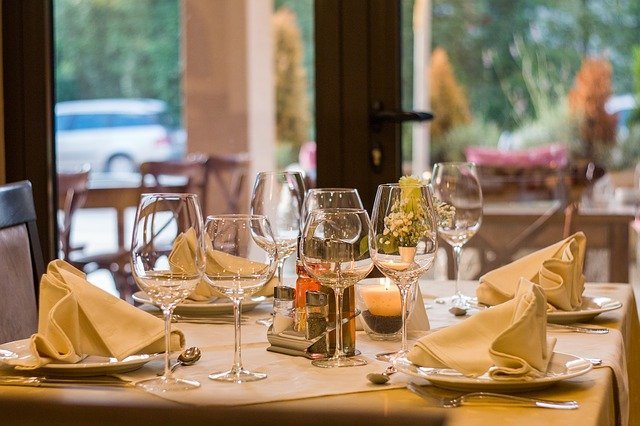There are countless options to choose from when it comes to restaurant marketing. However, that doesn’t mean your restaurant should try to implement all of them. Instead, it’s almost always best to choose two to three marketing strategies and perfect them before trying something else.
Restaurant marketing is slightly different from other businesses, except the fundamentals remain the same. You want a robust digital presence, drive organic traffic to your website, and get potential customers to come to your restaurant. This article will cover the most vital digital marketing strategies for restaurants in 2022.
-
Use Google My Business for local SEO terms
If you’re reading this article, chances are you have a Google My Business page for your restaurant (If not, do this now). But have you optimized your page for local keywords and SEO? Unfortunately, most businesses don’t care to take this one step further, and they’re missing out on tons of potential customers.
The Google search crawlers analyze all of the text on your Google My Business. So include popular search terms into your description, use weekly posts to your advantage, and have lots of enticing images right on the front page. To rank the highest on Google, you’ll need to do the following:
- Get as many positive reviews as possible. Creating a rewards program (We’ll talk more about that later, too) for people to leave reviews is an excellent way to leg up against your competition. Google ranks restaurants that have more reviews higher than other restaurants. In addition, having more reviews is a strong indicator that other people love your restaurant.
- Include high-quality, enticing images of your location and food.
- Include descriptive words that people are searching for. For example, if you own an Italian-style restaurant, the word Italian should appear a few times in your description. That helps you rank for search terms like “Italian restaurants near me.”
-
Nail your website format
Nailing your website format can increase overall conversions. Your Google My Business page is how you’ll get people aware of your restaurant. A compelling website can be the deciding factor when reaching new customers. The ideal website makes it easy for viewers to find what they’re looking for, whether menus or location. Here are the best tips for formatting your homepage for restaurants.
- Use high-quality, enticing images right when the viewer clicks on your site. Just like your Google My Business, you want to visually represent what it’s like to eat at your restaurant.
- Use buttons for menus, online orders, and potentially reservations (We’ll discuss that in tip number 3). When potential customers visit your site, they’ll know what they’re looking for most of the time. Whether it’s the menu, address, or placing an online order for pickup, you want to make it easy as possible.
- Include a value proposition right above the buttons. A value proposition is a 5-20 word description of your restaurant that connects the customer’s wants to what your restaurant offers. Pro tip: Use adjectives that either paint an image in someone’s mind or make them crave the food you offer.
- Include a condensed brand story below tip number two. People love stories, and when someone decides to scroll, they can learn about how your restaurant started and what your business values are. It should be a short paragraph, and your brand story should be a condensed version of what’s on your about page.
- Digital Authority Partners offers a great resource on value propositions, images, and social proof for your restaurant’s digital marketing strategy.
-
Try an online reservation form
If you haven’t already, including an online reservation form is a great way to get more customers. Create a button that’s next to your menu and online order buttons. You might be thinking, how would this bring in more customers?
The answer depends on the transition to the internet. Everything is easier on the internet. Some people may not want to call and ask for a reservation. Yet, since it’s so easy to input their name to try a new restaurant, the chances of conversion are much higher. If you have the means to make your reservation form digital, we highly recommend testing it out for six months to see the results.
-
Email marketing
In the restaurant industry, email marketing is one of the most underleveraged marketing Emailstry. We rarely see any restaurants implement it, yet the upside can be massive. When it comes to email marketing, the goal is to bring customers back into your restaurant more frequently. Also, it increases your average customer lifetime value and indirectly affects word-of-mouth marketing.
We recommend offering incentives on your email list and emailing your customers often. Unfortunately, there is a negative perception of email marketing. However, email marketing is like a friend texting you; when a customer enjoys your restaurant and subscribes to your email list. They’re offering you rewards that you wouldn’t otherwise get. And it’s not out of the norm to receive a text a day from a friend. Pro tip: Hire an email marketing expert to take care of this for you.
-
Try to reach out to influencers and local food blogs
Influencer marketing is one of the most hyped-up forms of digital marketing right now. And it has every right to be. The returns with influencer marketing are undeniable. On average, the return was $6.50 for every $1.00 spent on influencer marketing.
Finding local food blogs is quite simple, and all you have to do is reach out. In an ideal world, you could reach out and try to get a post for free. However, paying for a post is worth it. The post will be on the internet forever, serving as a permanent reference for potential customers to read about your establishment.
Final Thoughts
Restaurant marketing has been moving to primarily digital, just like any other business. However, to continue to be at the forefront of restaurants in your city, you need to adapt and maximize your digital presence. We covered five solid tips that you can start implementing as soon as possible. Most importantly, create a new marketing initiative like email or influencer marketing to test the results.


























